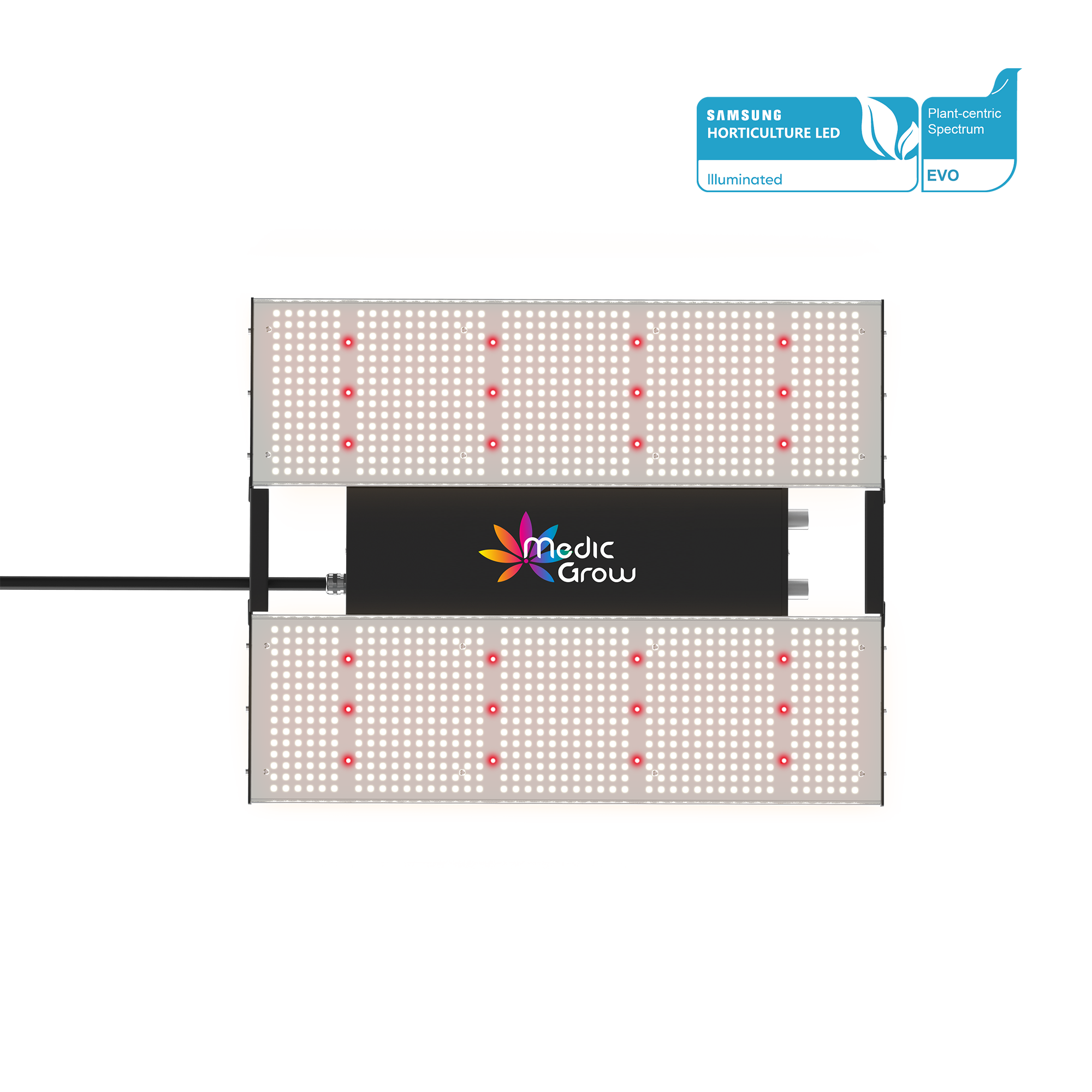
What is the Best Way to Clone A Plant?
There might be a misconception you might have when you hear of plant cloning for the first time. You may have thought that to clone a plant, you need to have some equipment(like Medicgrow grow lights and a watering system) and some scientific qualifications, but that’s not the case.
One fun thing about cloning is that it is so easy to do, and anyone can start cloning immediately with the necessary information.
In this article, you will discover the best way to clone plants and the step-by-step guidelines you can use to get started. You will ultimately find answers to your many questions about plant cloning.
Main Content:
- 1. What is plant cloning?
- 2. The Best Way To Clone A Plant
- 3. Plant Cloning Step-by-Step Guide
- 4. Caring for Your Clone Plant
- 5. Conclusion
- 6. FAQ about Cloning Plants
What is plant cloning?
You may probably be familiar with the general term ‘cloning.’
Now, in terms of plants, it is the process of generating genetically identical plants from a parent/original plant.
So, when you clone a plant, you’re simply forming new plants that are similar in every way to the original one.

The cloning process requires you to take cuttings of one plant and then plant them elsewhere to grow independently. It usually takes about 1-3 weeks to form roots and start a new life as a clone.
Plant cloning is easy, and to begin, all you need to get is the best parent plant, the right container, root hormones, and soil. Ensure that the conditions are just right, then make your cuttings, and go on to plant.
The Best Way To Clone A Plant
There are different methods for plant cloning. Each method has its advantages and demerits. However, the success of any cloning process is dependent on several factors.
First, the cloning techniques used, then the quality of materials employed, and then the method.
If you’re just beginning your cloning journey, it’s almost certain that you’d be seeking the easiest way to clone a plant. However, in this article, you will be shown all the options, and then you’ll make a well-informed decision on this subject.
Is there such a thing as the best way to clone a plant? Yes, there is!
What you need is a cloner.
Cloners are invaluable to a successful cloning plant process; they give your plants the most decent environment to thrive. With cloners, you are assured that your plants will get to have a strong rooting system in a short time as compared to using the soil.

Image Source: trees.com
Regardless of your plant cloning goals, cloners are indispensable. They can help you grow as much as 6-150 plants in total.
A good cloner will come with:
- A pump for easy circulation of nutrients and water
- Misters to aid with a humid environment
- Slotted baskets to help you fix in the growing media of your choice
Going with what is most popular in the cloning world, most people prefer to use Rockwool cubes. These cubes help to retain nutrients and lock in moisture for your clones’ tender root systems.
So, it’s best to check out Rockwool cubes as they’re inexpensive and non-toxic. Additionally, if you are cloning plants indoors, you may require the grow tent kits and high-quality grow light like Medic Grow NEO 1000-watt grow lights to ensure higher yields.
Plant Cloning Step-by-Step Guide
Alright! Let’s walk through the step-by-step process of how to clone a plant.
First, there is a preliminary step to take before cloning, and then we’ll talk about plant cloning properly.
The Preliminary Step to Clone a Plant
This step mainly involves getting the proper materials for the cloning process.
Here are the things you need to do.
Select the Cloning Container
The kind of container you choose is determined by the size of the plant when it finally grows and the number of plants you wish to clone. This means that you need to begin with proper research and then select based on what you find.
The options available range from as little as plastic cups, to as wide as pots for plant cloning. With the cups, you would need to poke some holes in the bottom.
However, the best choice is to use translucent containers. These containers help you see through to determine how far the roots have developed.
Rockwool or Soil
Here's where you need to decide whether or not you will be using soil to grow your plant. Rockwool cubes have their merits and demerits, the same as the regular planting soil.

Rockwool doesn’t contain the kind of nutrients that regular soil does. It requires that it be soaked overnight with water at a 4.5 pH balance.
In other words, it takes a lot of preparation to get a successful clone with Rockwool. You also need to bore a hole through the cubes with a great degree of accuracy so that it's not too small or big for the roots.
Composted garden soil, seed starting mix, and potting soil are good variants of soil you can choose from. For this process, you need to be intentional about the soil you choose.
Root Hormones
Naturally, plants contain root hormones which are called auxins. These hormones help these plants grow more leaves or more roots. Root hormones generally aid with the process of cell growth, and when you buy one, it's mostly synthetic.
If you prefer to clone a plant organically, then you may not buy the idea of root hormones. The reason is that most root hormones have toxic chemicals like fungicides. Luckily, there are other options you can choose from like cinnamon, willow tea, etc.
However, not all plants will do well without root hormones, so it's important to find out whether rooting hormones are suitable for your cloning plants before using them.
The Planting Phase
This is the point where you get to plant the stem you’ve cut from the original plant in 6 steps.
1. Fill the Container with the Chosen Media
If it's Rockwool cubes you've chosen to use for this process, then place the cubes into the containers directly. But, if it’s soil that you’ve chosen, fill up the container and bore a hole from the top to the bottom of the soil.
2. Make the Soil Moist
In this stage of the plant cloning process, if you're using Rockwool cubes, you don't need to make the cubes wet. However, if your medium is soil, make it wet enough to sustain the cutting; don't make it drenched.
3. Cut the Stem
The next thing you need to do is to select the most appropriate stem to cut. It is best to choose a lateral stem rather than a terminal one, and then cut through it diagonally. The main stems that sprout from the ground are called terminal stems. While those that grow from the sides are the lateral ones.
After cutting, get rid of any flower buds or leaves from the base of the stem. The reason for this is that these parts will end up drawing up water within the soil and prevent the process of root development.
4. Apply the Rooting Hormone
There are different types of root hormones; some come in powder form, while others are liquid. If you're using powder root hormones, then soak the end of the stem in water, and dip it into the rooting hormone. Ensure that you do not cover the entire stem in root hormones.
5. Put the Plant Stem into the Soil's Hole or Rockwool
It is best to insert a third of the stem into the soil or Rockwool cubes for better results.
6. Cover the Container
As you attempt to clone a plant, ensure that you're very particular about following each process carefully. Here, you’d have to cover the container with glass or plastic to ensure that the moisture is locked in while the clone develops roots.
Caring for Your Clone Plant
Congratulations! You’ve passed the hardest part of this planting cloning journey. Now to the easy part.
There is no successful process without consistent nurturing and care for your plant. Yes, you’ve used the best cloning techniques and media, yet, it will count for nothing if the clone fails to thrive.
So, how can you care for your plant clone?
Position the Container
Remember that too much exposure to sunlight and heat will kill your clone, and you sure won’t want that. So, ensure you adjust the container to get adequate sunlight. Use grow tent kits to avoid overexposure to the sun. If your clone plant gets burned, read it here to fix it: What is Light Burn & How to Fix it?
Image Source: hydrodynamicsintl.com
As part of your effort to care for your plant, a good option for adequate light exposure is grow lights. These are specially designed with the science of the growth of your plants in mind. So, you can grow your plants indoors and have an excellent output at the end of the day.
Keep the Soil Moist
It takes your plant about 1-2 weeks to begin the process of root formation.
Therefore, you want to give this growing clone all the support it needs to thrive. One way to do this is by making the soil moist regularly. Ensure you take caution not to drench the soil - you may kill the clone that way.
Nutrients
A healthy plant clone is a product of many factors we have talked about in this article. One crucial element needed for these young plants to thrive is good nutrition.
The medium used must be able to support the growth of these plants and that means you need to do thorough research before picking a medium e.g. Rockwool or soil.
Conclusion
In conclusion, plant cloning is an effective way to propagate your favorite plants. By following our detailed steps for plant cloning and utilizing a good cloner and LED grow light like Medicgrow 800-watt grow light, you can significantly improve the success rate of your plant cloning. Start cloning your favorite plants today!
Related Posts:
How Much Light Do Indoor Plants Need?
7 Factors Affecting Plant Growth - How to Make Plants Grow Faster?
What Growers Should Know: The Importance of Photoperiod For Plants
FAQ about Cloning Plants
1. How to Clone Marijuana Plants?
Cloning marijuana plants is a good way to replicate the best traits of a healthy mother plant. Start by selecting a vigorous, disease-free mother plant that is at least two months old.
Then use sterilized scissors to take cuttings from the plant's lower branches. Dip the cut ends in cloning gel or powder to encourage root growth, then place the cuttings in a rooting medium like rock wool or soil.
Remember to keep the environment humid and the cuttings well-lit, but avoid direct sunlight. Maintain a consistent temperature and mist the cuttings regularly to prevent them from drying out.
With proper care, the cuttings will develop roots in about 1-2 weeks, ready to be transplanted and grown into mature plants.
2. How to Clone a Plant with Water?
Cloning a plant with water is a simple and effective method. Start by selecting a healthy mother plant and cutting a 4-6 inch branch below a node using sterilized scissors. Remove the lower leaves and place the cutting in a glass of clean, filtered water, making sure the nodes are submerged.
Also keep the glass in a well-lit area but away from direct sunlight, and change the water every few days to keep it fresh. After 1-2 weeks, you should see roots starting to develop. Once the roots are a few inches long, you can transplant the cutting into the soil or another growing medium.
3. How to Clone a Plant in Soil
Cloning a plant in soil is not hard. Start by selecting a healthy mother plant and taking a 4-6 inch cutting just below a node. Dip the cut end in rooting hormone, then plant it in a pot filled with well-draining soi.
To maintain high humidity, cover the pot with a plastic dome or bag, and place it in a warm, bright area away from direct sunlight. Keep the soil moist and ventilate occasionally to prevent mold.
After 2-4 weeks, check for roots by gently pulling on the cutting. Once roots are established, you can transplant the new plant into a larger pot or its final growing location.
Featured Products
Blog Posts
Contact Us with Any Idea!
- Choosing a selection results in a full page refresh.
!
































